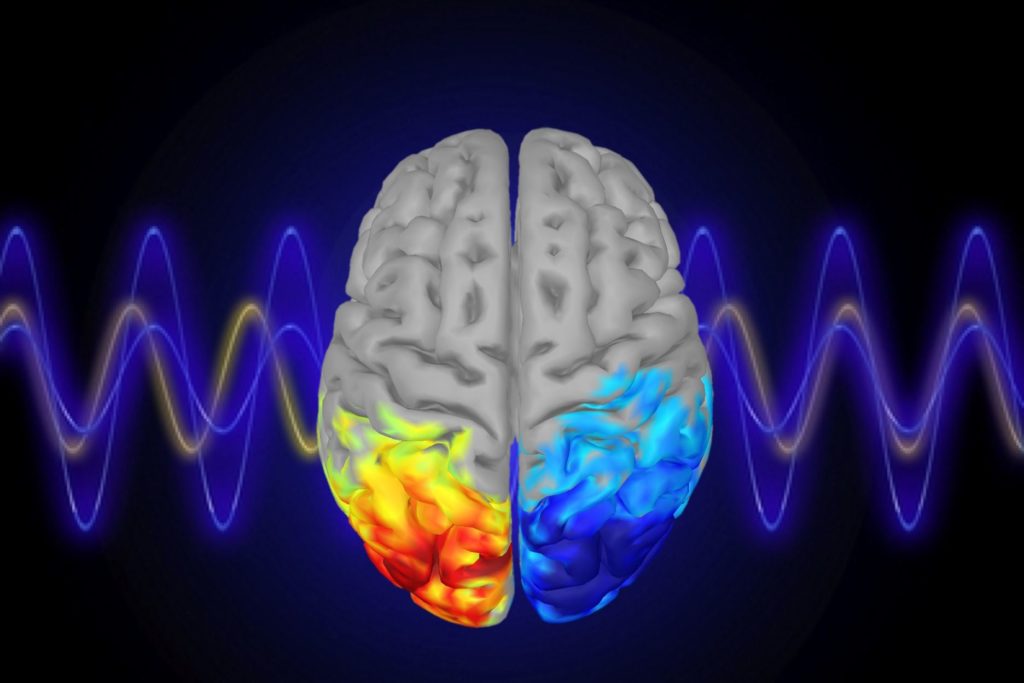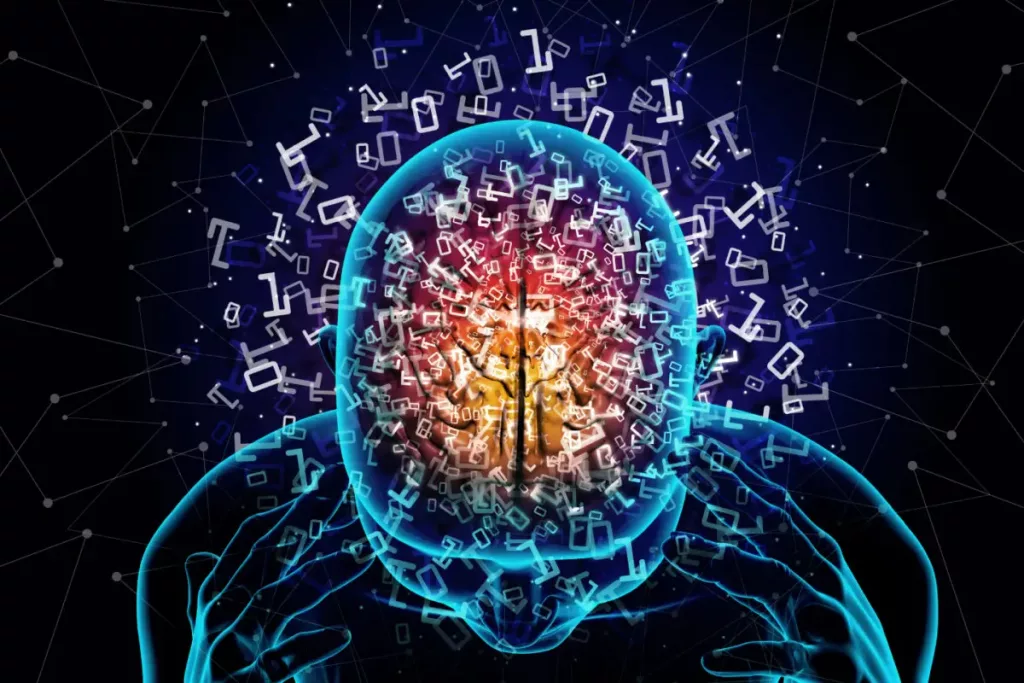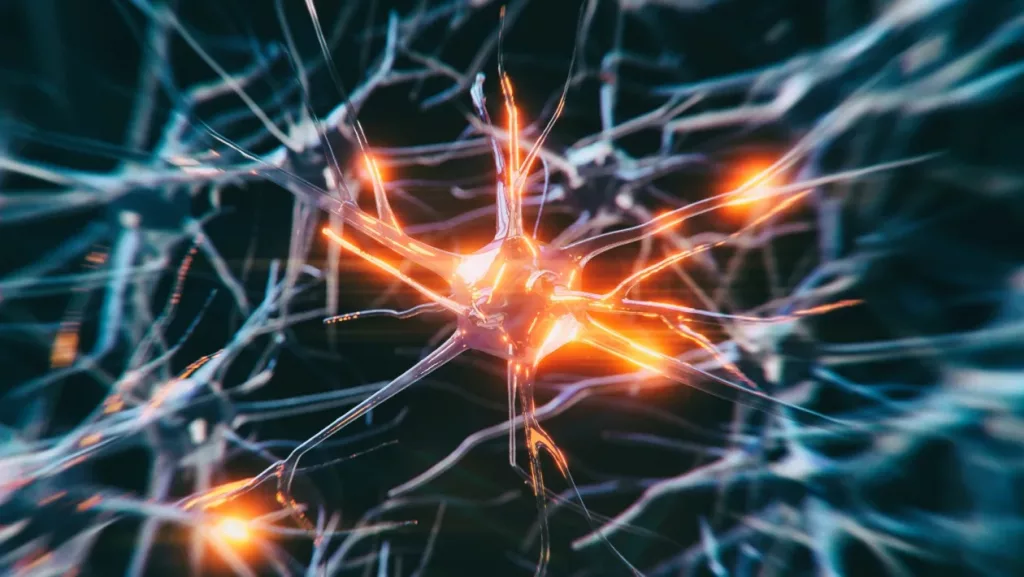Apparently, the montage of a to-be-dead character’s life that is shown right before their death isn’t only aesthetic but also could be very real. So real that it could be something happening to you too moments before your last breath. Isn’t that so beautiful? To think that our brain plays all our favourite memories during our last moments having life makes me so happy that I was born a human. Like, nothing else about being a human makes me happy.
Well, so without rubbing off my Gen-Z angst on you, let’s get into today’s study and figure out if and how brain scans reveal that moment of life flashes before death.

The Sad Little Story of Mr Canadian Grandpa
Firstly, let me tell you a story, kinda short, kinda boring, and also a little sad. It’s about an 87-year-old Grandpa from Canada. He had epilepsy and used to go through EEGs (electroencephalogram) as his routine check-up. In 2016, he was admitted to an emergency department after he fell, and ended up in a coma of Glasgow Scale of Coma 15 unfortunately Mr Canadian Grandpa’s health rapidly deteriorated to GSC 10.
He was in intensive care for two days after which he started experiencing seizures. During one of them, he was taken for a routine test. The doctors wanted to know what exactly was happening in his brain during the seizures. He was going through another EEG of his life, his brain was being scanned, pictures of his brain activities were being taken, and that’s when Mr Canadian Grandpa’s time on this earth was over.
That’s heartbreaking, but also that is the only reason why this study even exists. So let’s mourn for our beloved Mr Canadian Grandpa for a minute (or don’t, we don’t care), and move on to learn some important concepts before reading about the study.

What Are Brain Waves?
Brain Waves are oscillating electrical impulses in the brain. An individual’s behaviour, emotions, and thoughts are communicated between neurons within our brains. All brain waves are produced by synchronised electrical pulses from masses of neurons communicating with each other. Our brain waves occur at various frequencies. Some are fast and some are slow.
Remember EEG or an Electroencephalogram? The test that was performed on Mr Canadian Grandpa? Good. That exact test is used to take pictures of these waves and their activities of these waves. With EEG, these brain waves are measured in terms of electrical activity over time and the relative dominance of different types of waves.
The classic names of these wave bands are delta, theta, alpha, beta, and gamma. They are measured in cycles per second or hertz (Hz). We will learn about them in detail in a minute.
What’s the Relationship of Brain Waves with the Study?
Before I bombard you with information on the types of Brain Waves, I figured that it’s important to tell you why we even need to know about Brain Waves and Types of Brain Waves.
The reason is that in this study only pictures of the electrical activities in Mr Canadian Grandpa’s brain at the time of death were taken. There was no intention of that happening. As the researchers never intended to extract scans of that sort, there were no precautionary measures taken. The validity of this study isn’t much on that basis. However, whatever was extracted that fateful day of 2016, was something the human had never had before. It was a record of electrical activities in a human’s brain moments before dying, during death, and moments after death.
There are factors i.e. his very poor health condition, seizure, and epilepsy, which can be substantiated as the reasons for some of the electrical activities in his brain. All of those activities, the relation between those neural activities, and his health condition and life flashing phenomenon are identified by the location of the activities in the brain and the frequency of the brain waves. That is why it is relevant for us to know about the brain waves before we go hard-core on the studies.

Types of Brain Waves (In Short)
In very short, there are five types of Brain Waves. They are differentiated by their frequency range. They all reflect different kinds of states. Here’s a table for brief understanding.
| Brain Waves | Frequency | Brain States |
| Gamma Waves | Above 35 Hz | Cognitive Processes i.e. Concentration |
| Beta Waves | 12-35 Hz | Anxiety Dominant, Distracted, Relaxed |
| Alpha Waves | 8-12 Hz | Very Relaxed |
| Theta Waves | 4-8 Hz | Deeply Relaxed, Inward Focused |
| Delta Waves | 0.5-4 Hz | Sleep |
A simple table for a brief understanding of Brain Waves and their varieties.
Types of Brain Waves (Explained)
(Feel free to skip to the next segment, as this is not required for you to read if you only want to learn about the study for fun.)
There are five types of Brain Waves, differentiated by their frequency range.
- Gamma Waves: The first type of wave is Gamma, its frequency ranges from 36 cycles a second. Gamma Waves characterise the state of deep concentration. Its amplitude can be achieved and increased with methodical meditation. Gamma Wave oscillations at 40 Hz are considered to be associated with coherence and mental clarity. It activates when a person can distinguish between wakefulness and sleep when a person can pay attention to sensory inputs and be aware of their surroundings.
- Beta Waves: The frequency of beta waves ranges from 15 to 35 cycles a second. Beta waves are characteristics of a strongly engaged mind. A person in active conversation would be in beta. A debater would be in high beta. A person making a speech, a teacher, or a talk show host would all be in beta when they are engaged in their work.
- Alpha Waves: The next brainwave category in order of frequency is alpha. Where beta represents arousal, alpha represents non-arousal. Alpha brain waves are slower, and higher in amplitude. Their frequency ranges from 9 to 14 cycles per second. A person who has completed a task and sits down to rest is often in an alpha state. A person who takes time out to reflect or meditate is usually in an alpha state. A person who takes a break from a conference and walks in the garden is often in an alpha state.
- Theta Waves: The next state, theta brainwaves, are typical of even greater amplitude and slower frequency. This frequency range is normally between 5 and 8 cycles a second. A person who has taken time off from a task and begins to daydream is often in a theta brainwave state. A person who is driving on a freeway, and discovers that they can’t recall the last five miles, is often in a theta state–induced by the process of freeway driving. The repetitious nature of that form of driving compared to a country road would differentiate a theta state and a beta state to perform the driving task safely.
- Delta Waves: The final brainwave state is the delta. Here the brainwaves are of the greatest amplitude and slowest frequency. They typically centre around a range of 0.5 to 4 cycles per second. They never go down to zero because that would mean that you were brain dead. But, deep dreamless sleep would take you down to the lowest frequency. Typically, 2 to 3 cycles a second.

The Sad Little Story of Mr Canadian Grandpa Continues…
Our beloved 87-year-old Mr Canadian Grandpa while being scanned got a fatal heart attack, which took his life away from him within a minute. Which resulted in a total of 900 seconds of brain activity before, during, and after the death being captured and recorded by the scientists present in the laboratory.
The most useful moments out of the 900 seconds of recording were the 30 seconds before the heart stopped beating, and the 30 seconds after the heart stopped beating.
Remember that we have read in the previous paragraphs that Gamma Waves are associated with Cognitive Processes such as deep concentration, memory, etc. This is where things intersect and start making sense. During the thirty seconds before the heart stopped beating and the thirty seconds after the heart stopped beating, the only dominant brain waves noticed during that time were the Gamma Waves. Ain’t that a perfect Eureka moment? Well, hold your horses, for it gets even better. The particular frequency of the Gamma Waves suggests that the brain was most likely in its ‘recalling stage’, in other words, most likely the brain was trying to remember something, it was doing something very much related to memory. EUREKA!
But, does this prove that life flashes before one’s eyes before their death?
To your, and everyone’s disappointment, no. Not exactly. This does suggest so and proves that it is highly probable that the human brain plays some memories before one’s death but it does not exactly prove so. Objectively, we aren’t sure if what happened to Mr Canadian Grandpa is what happens to every human during their death. We are also not sure if the presence of Gamma Waves was not caused by the cardiac arrest or the seizure.
Some people who have had a new-death experience do approve of this theory of life flashing before one dies. What do you think? What is your take on this? Do leave a comment below!
You May Also Like – Emotion, Memory, and Brain Scans!! Is there really any connection?

